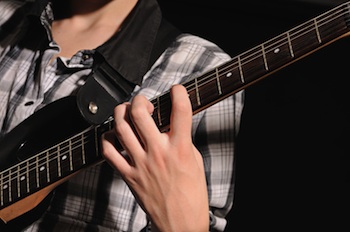Good chord progressions are not about where you’ve been — they’re about where you’re going.
____________
Download “The Essential Secrets of Songwriting” 6-eBook Bundle, and build your audience base!
_____________
 It’s no accident of terminology that we call a set of chords used in a piece of music a progression. If you think of progressions as simply one chord followed by another, other terms might have sufficed: chord successions, for example, or perhaps a chord grouping. But in fact, progression best describes what chords do. Because in good music, chords don’t just follow each other, they progress with purpose and direction.
It’s no accident of terminology that we call a set of chords used in a piece of music a progression. If you think of progressions as simply one chord followed by another, other terms might have sufficed: chord successions, for example, or perhaps a chord grouping. But in fact, progression best describes what chords do. Because in good music, chords don’t just follow each other, they progress with purpose and direction.
That sense of purpose and direction is an important aspect of chord progressions: the harmonic goal. It’s not much different, really, from a river. Even in turbulent rivers where the water seems to be churning and spinning randomly, the water eventually reaches its goal. The more you stare at that one spot in the river, however, the less likely you are to see that the water is moving downstream.
So too with even complex chord progressions that seem to be churning without a specific direction. Even in those cases, the music often eventually reaches its goal; complex chord progressions still need direction.
The point here is that good chord progressions are all about the future. As you work out your songs’ chord progressions, you should be able to stop the music at any point and answer the question, “Where is my chord progression going?”
If you can’t really answer that question, you are probably creating a progression that sounds and feels directionless and confusing.
That’s certainly not to say that a chord progression can’t “change its mind” as it goes, and suddenly move toward a new tonal centre, and such progressions often give us very interesting music. But at any point along that progression, things should be moving to a harmonic goal, even if it’s just a temporary one.
Here are some examples of chord progressions you can try. They work in any key, in any style, and most of them change direction partway through by using altered chords (i.e., chords that don’t belong in the key of choice.).
The first three start and end in A, taking interesting side journeys in the middle. The last three start in A, but by changing direction at their midpoint they end up in new tonal centre.
- A D B7 E C#7 F#m G E7 A
- A F#m F7 E G C F E7 A
- A G/A D/A Dm/A Gm7 C/G D/G E7 A
- A C F Bb Eb Ab Bb Eb
- A D B7 Bb7 A7 D G A7 D
- A F Db E Am D Gm Am Gm A7 D
____________
Follow Gary on Twitter
 “The Essential Secrets of Songwriting” 6 e-book bundle will show you how to write great songs, harmonize your melodies, and give you hundreds of chord progressions in the process.
“The Essential Secrets of Songwriting” 6 e-book bundle will show you how to write great songs, harmonize your melodies, and give you hundreds of chord progressions in the process.
PURCHASE and DOWNLOAD the e-books for your laptop/desktop









